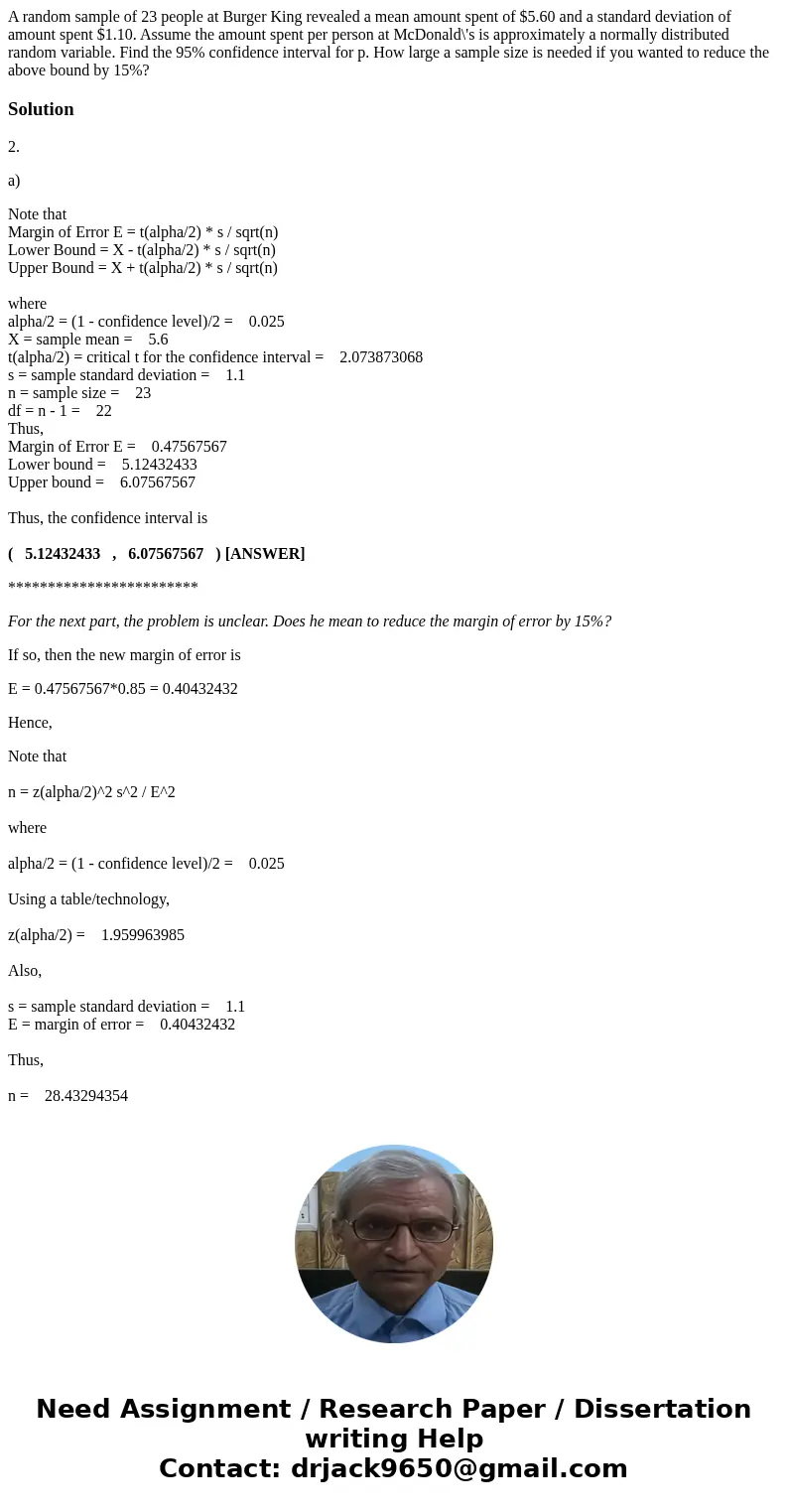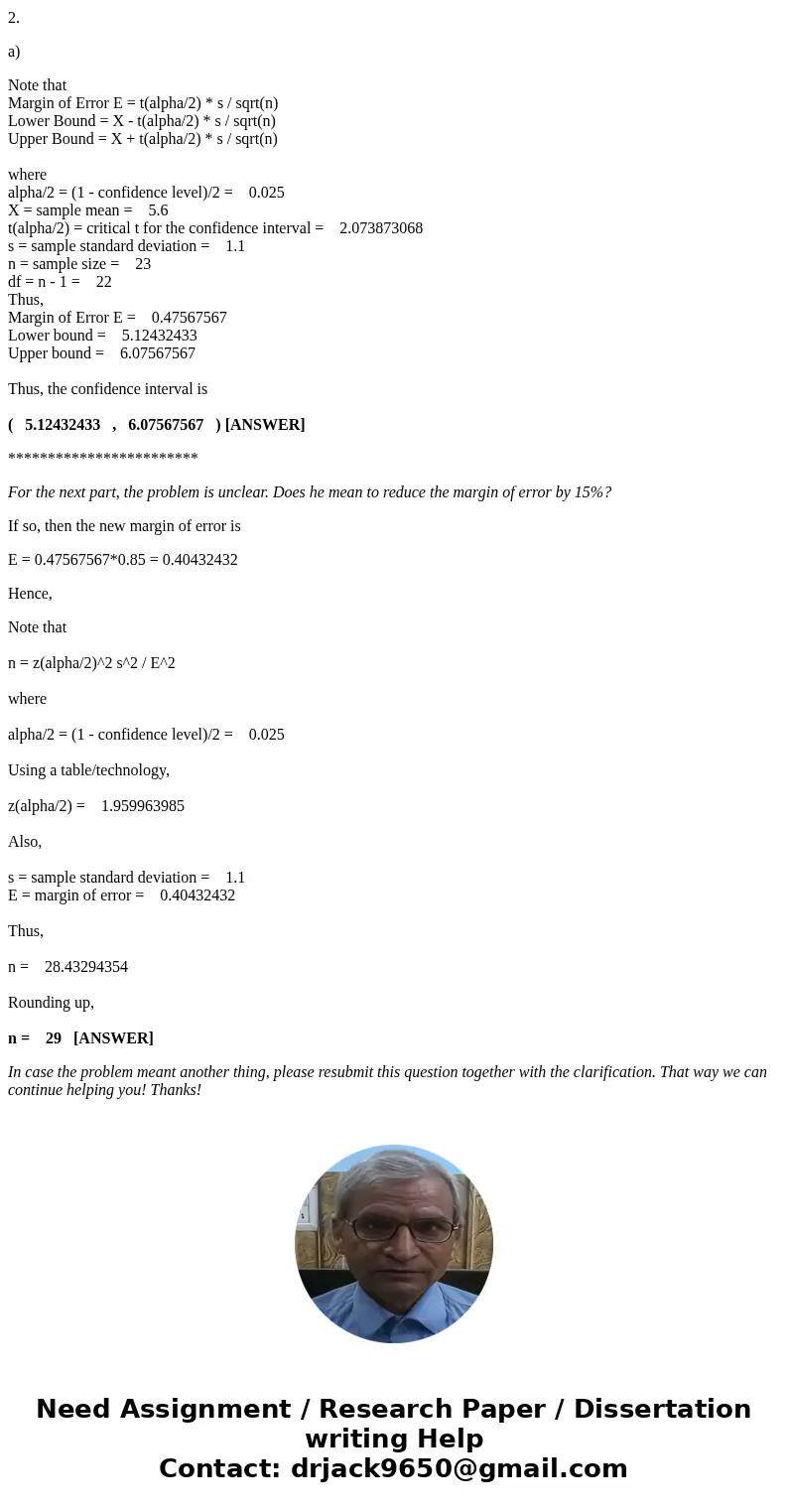A random sample of 23 people at Burger King revealed a mean
Solution
2.
a)
Note that
Margin of Error E = t(alpha/2) * s / sqrt(n)
Lower Bound = X - t(alpha/2) * s / sqrt(n)
Upper Bound = X + t(alpha/2) * s / sqrt(n)
where
alpha/2 = (1 - confidence level)/2 = 0.025
X = sample mean = 5.6
t(alpha/2) = critical t for the confidence interval = 2.073873068
s = sample standard deviation = 1.1
n = sample size = 23
df = n - 1 = 22
Thus,
Margin of Error E = 0.47567567
Lower bound = 5.12432433
Upper bound = 6.07567567
Thus, the confidence interval is
( 5.12432433 , 6.07567567 ) [ANSWER]
************************
For the next part, the problem is unclear. Does he mean to reduce the margin of error by 15%?
If so, then the new margin of error is
E = 0.47567567*0.85 = 0.40432432
Hence,
Note that
n = z(alpha/2)^2 s^2 / E^2
where
alpha/2 = (1 - confidence level)/2 = 0.025
Using a table/technology,
z(alpha/2) = 1.959963985
Also,
s = sample standard deviation = 1.1
E = margin of error = 0.40432432
Thus,
n = 28.43294354
Rounding up,
n = 29 [ANSWER]
In case the problem meant another thing, please resubmit this question together with the clarification. That way we can continue helping you! Thanks!


 Homework Sourse
Homework Sourse